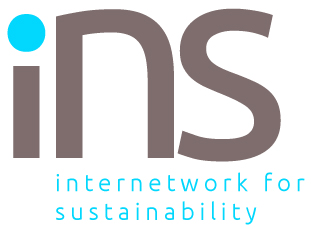What this is about
This piece examines a troubling paradox: banned pesticides in the European Union due to their harm to human health or the environment are resurfacing on the EU market through imported fruits and vegetables.
Why you should read this
The issue addresses three major themes: food safety, sustainability, and fair trade. It raises uncomfortable questions about the credibility of European regulation and the limits of globalization. How can substances that are too dangerous for use in Europe still end up on European plates?
How the EU ban works
The EU has a strict framework that determines which pesticides are allowed. Regulation (EC) No 396/2005 sets maximum residue limits for pesticides on food. There is also a list of substances no longer approved because of their harmful effects on people or ecosystems, published by Pesticide Action Network Europe (PAN Europe).
In theory, food sold in the EU should not contain residues of pesticides that are banned within the Union. In practice, that separation is far from watertight.
The paradox: pesticides banned here, used elsewhere
European chemical companies continue to export pesticides that are no longer permitted for use within the EU. In 2018 alone, more than 81,000 tonnes of such products were shipped to non-EU countries, according to Slow Food. The result is a contradiction: what is too dangerous for use here is applied elsewhere — and comes back via global trade.
PAN Europe found that imported fruits and vegetables often contain residues of pesticides banned in the EU. Tests detected six substances classified as reproductive toxins. Exotic fruits such as guavas and goji berries were among the most contaminated, according to their report on banned pesticides in EU food.
The European Commission has acknowledged the problem. It is now drafting measures to prevent hazardous pesticides from re-entering the EU through imported goods, according to Farm Policy News (University of Illinois). The European Parliament has also voted to ban exceptions for substances that are prohibited, even when they are found in imported products.
Unequal standards and weak enforcement
A major problem is that imported crops are sometimes allowed to contain higher residue levels than EU-grown produce. This creates unfair competition: European farmers must follow stricter rules, while imported goods are held to laxer standards. At the same time, consumers remain exposed to chemicals that are officially banned in the EU.
EU monitoring data indicate that approximately 98 percent of tested samples comply with legal limits. But that statistic can be misleading. A substance may be banned for use in Europe, yet still permitted in trace amounts on imported food. The law allows this distinction, but it creates confusion — and a double standard.
Consequences for consumers, the environment, and farmers
For consumers
Most food on the market stays within legal residue limits, but that doesn’t mean it’s risk-free. For vulnerable groups such as children or pregnant women, even low-level exposure can be harmful. Moreover, the combined effect of multiple pesticide residues is still poorly understood.
For the environment
Pesticide use outside Europe frequently harms biodiversity, pollutes water, and negatively impacts local communities. By importing such products, the EU indirectly contributes to environmental degradation in other regions, while maintaining a clean image at home.
For European farmers
Strict EU rules raise production costs, while imported produce grown with cheaper, more polluting methods can undercut local producers. This undermines both fair competition and the credibility of Europe’s sustainable agriculture policies.
Concrete examples
A PAN Europe report found that citrus fruits imported from outside the EU contained significantly higher residue levels than those domestically grown. In imported grapefruits, 30 percent of the samples exceeded European reference values for banned pesticides. Meanwhile, investigations by GIJN revealed that in countries such as Nigeria, pesticides that have been long banned in Europe are still being used — and some of those crops are exported to the EU.
What is at stake
The EU faces a critical choice. To maintain its reputation as a global leader in food safety and environmental protection, it must ensure consistency. The same rules should apply to both domestic and imported products. Otherwise, consumers are left with a false sense of safety while banned chemicals slip in through the back door.
Policymakers can address this by tightening import controls and improving transparency in residue reporting. Producers, both inside and outside Europe, can shift toward sustainable practices that avoid banned substances. Consumers can help by choosing products with trustworthy origins and those that have been certified for their environmental sustainability.
The bottom line
The reappearance of banned pesticides through imported fruits and vegetables exposes the fragility of Europe’s food safety system. What was meant to protect people and the planet is being undermined by global trade loopholes. As long as the EU doesn’t apply identical standards to imported goods and domestic production, its promise of safe and fair food remains only partially fulfilled.
The solution lies in consistency — the same protection for everyone, no matter where the food comes from. Only then will the EU ban truly hold beyond its borders.











